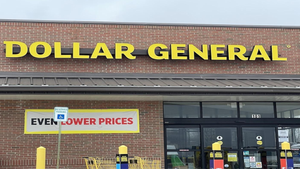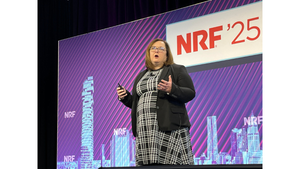How the Pandemic Put Brand Loyalty Up for GrabsHow the Pandemic Put Brand Loyalty Up for Grabs
Brands, retailers need a rugged and flexible supply chain, Profitero says. When stocks were depleted at the onset of the COVID crisis, consumers didn't stop buying, but pivoted, highlighting a need for "rugged" and flexible supply chains and attention to new channels and opportunities, a new report says.

The national run on toilet tissue that came with the onset of the coronavirus pandemic within three months radically altered the mix of brands that appeared on online shopping searches, with so-called long-tail challenger brands growing from a paltry representation to more than half—all at the expense of its three largest branded competitors and private brands.
That was just one example of how brand loyalty went up for grabs during the crisis and is converging with growing economic uncertainty that could result in millions of lost sales for some consumer goods companies and retailers—and new growth opportunities for others—a new report details.
The study from Profitero highlights that consumers faced with reduced choices as a result of unavailable items aren’t going without them but rather are rapidly finding their own means of substitution and switching, often reallocating their dollars not to direct competitors but to entirely new categories and channels. That could also signal new opportunities for some brands, Profitero noted. The growth of digital shopping in the meantime—including a 150% year-over-year increase in online grocery shopping since the pandemic began—has similarly strong implications, particularly in certain categories of trade.
“It’s time for brands to challenge all prior assumptions to meet the new shopping behaviors because the genie isn’t going back in the bottle,” said Sarah Hofstetter, president of Profitero, the Ireland-based platform for brand e-commerce strategy.
Brand switching reached historic levels as stock depleted during the pandemic, with some categories such as dry pasta reaching a “switch rate” of 53% in April, indicating more than half of consumers purchased a brand of noodle they hadn’t intended to buy. These decisions could have big implications as nearly one-third of shoppers who tried a new brand stuck with it, the report noted, citing Alix Partners data.
This behavior indicates brands should devote resources toward developing a more “rugged,” diverse and flexible supply chain, able to respond to sudden changes in availability, such as the direct-to-consumer sites launched by PepsiCo during the crisis or the moves by Mondelez and Coca-Cola to cull their own product offerings so as to meet those in greatest demand.
Low or out-of-stock items on digital shelves in the meantime became quickly “invisible” and “irrelevant” to consumers, leading to share loss to secondary and challenger brands, the report added. In the hard-hit toilet tissue category referenced above, for example, Profitero detailed 538% growth for “long tail” brands appearing on “page 1” organic search results on Amazon between January and April, growing from 8% to 51% in that time. Their growth coincided with share losses for giants Georgia Pacific, Kimberley-Clark and Procter & Gamble, respectively, along with Amazon’s own private label, which were the four best-performing brands in that metric in January.
This highlights a need for brands to invest in online marketing and search placement. “Imagine if you lost 40%-50% of the facing available at Walmart or Kroger,” the report said. “That’s the equivalent to losing share of page 1 on a high-traffic e-commerce site like Amazon or Walmart.com,” the report noted.
Consumers who couldn’t find what they wanted when they shopped didn’t stop shopping but instead pivoted their decisions in some unpredictable ways, triggering, for example, increases in sales of flour, prepared meals and soups when they could find their preferred dry pasta; and new sales of bleach when they wanted disinfecting wipes. While Profitero noted it was too early to note whether those changes could be permanent, brands should take these events as reminders to evaluate their portfolios against the trends and “make sure you have a good grasp on what’s happening in your category, and how consumer switching behavior may be redefining your competitive set.”
The pandemic also accelerated ongoing share shift from brick-and-mortar to online, particularly for so-called “essential” items such as groceries that have been relatively slow to go virtual. The report noted online grocery in 2020 would increase by 46% vs. 2019, growing from 4.4% to 6.4% penetration, the report said, citing Nielsen/Rakuten data. Categories such as pet care, health and beauty, baby and household also saw significant share increases.
Brands therefore “need to be where their shoppers are,” the report concluded, including outlets beyond Amazon and Walmart such as Publix, Albertsons and newer platforms like Instacart, GoPuff and Shipt.
About the Author
You May Also Like






